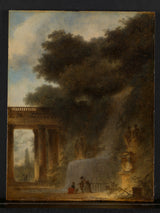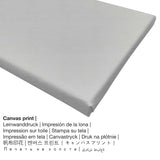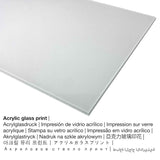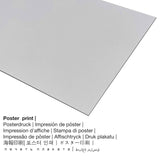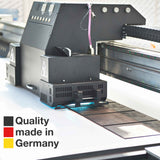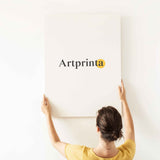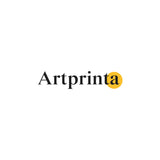Jean Honoré Fragonard, 1775 - Cascade - mbipụta nka mara mma
Ụtụ gụnyere. Mbupu gbakọrọ na ndenye ọpụpụ.
Kedu ụdị ngwaahịa anyị na-enye?
The nka ochie mere nka site na Jean Honoré Fragonard in 1775. The original has the size: 11 1/2 x 9 1/2 in (29,2 x 24,1 cm). Mmanụ na osisi was applied by the European artist as the technique for the artpiece. Today, this artpiece can be viewed in in the Ụlọ ihe ngosi nka nke Metropolitan nchịkọta dijitalụ na New York City, New York, United States of America. Site n'ikike nke: Ụlọ ihe ngosi nka nke Metropolitan, New York, mkpokọta Jules Bache, 1949 (licensed - public domain). The creditline of the artwork is the following: The Jules Bache Collection, 1949. On top of that, alignment is Eserese ya na oke nke 3: 4, nke pụtara na ogologo bụ 25% mkpụmkpụ karịa obosara.
Original information about the work of art from the museum (© Copyright - The Metropolitan Museum of Art - www.metmuseum.org)
In 1756, having won the Prix de Rome, Fragonard departed for four years at the French academy in that city. Of his route from Paris we know nothing, but on the return journey he traveled by way of Florence to Venice, west to Marseilles, and north through Lyons. He visited the principal cities of Italy again in 1774, as well as Vienna and Frankfurt. As this small picture demonstrates, he was very much influenced by the monuments, both ancient and modern, and the parks and gardens, of the Italian capital. The subject may be imaginary.
Tebụl a haziri ahazi nke ihe osise
| Aha ọrụ nka: | "The Cascade" |
| Nhazi: | sere |
| Otu sara mbara: | nka ochie |
| Nhazi oge: | 18th narị afọ |
| Ekepụtara: | 1775 |
| Afọ nka: | karịa afọ 240 |
| Agba na: | mmanụ n'elu osisi |
| Akụkụ izizi: | 11 1/2 x 9 1/2 na (29,2 x 24,1 cm) |
| Egosiputara na: | Museumlọ ihe ngosi nka nke Obodo |
| Ebe ngosi nka: | New York City, New York, Njikota Obodo Amerika |
| Webụsaịtị ihe ngosi nka: | Museumlọ ihe ngosi nka nke Obodo |
| Ikikere nke ihe osise: | ngalaba ọha |
| Site n'aka: | Ụlọ ihe ngosi nka nke Metropolitan, New York, mkpokọta Jules Bache, 1949 |
| Ebe E Si Nweta: | Nchịkọta Jules Bache, 1949 |
Nchịkọta nkenke nke onye na-ese ihe
| aha: | Jean Honoré Fragonard |
| okike onye nka: | nwoke |
| Obodo onye nka: | French |
| Ọrụ onye na-ese ihe: | onye na-ese ihe |
| Obodo onye nka: | France |
| Nkewa onye nka: | nna ukwu ochie |
| Nwụrụ anwụ: | 74 afọ |
| Afọ ọmụmụ: | 1732 |
| Afọ nwụrụ: | 1806 |
Họrọ nhọrọ ihe onwunwe
The product dropdown list gives you the opportunity to select a material and a size of your choice. Therefore, we allow you to choose among the following options:
- Aluminom dibond mbipụta (ọla): This is a metal print made on aluminium dibond with an outstanding effect of depth. For our Aluminium Dibond print, we print your favorite work of art on the surface of the white-primed aluminum. The bright components of the original work of art shine with a silk gloss, however without any glow.
- Kwaaji: The canvas direct print is a printed cotton canvas stretched on a wooden frame. A canvas produces a exclusive effect of three-dimensionality. A printed canvas of your favorite masterpiece will let you turn your customized into a large size work of art as you know from art galleries. Canvas Prints have the advantage of being relatively low in weight, which implies that it is easy and straightforward to hang up your Canvas print without extra wall-mounts. That is why, a canvas print is suitable for all types of walls.
- Bipụta na iko acrylic (nke nwere ezigbo mkpuchi iko): The print on acrylic glass, often denoted as a UV print on plexiglass, will turn the original into great décor. Additionally, it is a great alternative to dibond or canvas fine art prints. The major benefit of an acrylic glass art print is that contrasts and granular artwork details will be identifiable with the help of the very subtle gradation in the picture.
- Ebipụta akwụkwọ mmado na ihe akwa akwa: A poster is a printed sheet of cotton canvas paper with a slight texture on the surface. Please note, that depending on the size of the poster print we add a white margin between 2-6cm round about the print motif in order to facilitate the framing with your custom frame.
Nkọwa akụkọ ahaziri ahazi
| Nkewa ngwaahịa: | ọrụ mgbidi |
| Mmeputakwa: | dijitalụ mmeputakwa |
| Usoro mmepụta: | Mbipụta UV / dijitalụ |
| Production: | German mmepụta |
| Ụdị ngwaahịa: | a na-achọ |
| Eji ngwaahịa a chọrọ: | ime ụlọ, foto mgbidi |
| Nhazi nka nka: | usoro eserese |
| Njikwa oyiyi: | 3: 4 |
| Ihe: | ogologo bụ 25% mkpụmkpụ karịa obosara |
| Nhọrọ dị: | akwụkwọ mmado (akwụkwọ kwaaji), mbipụta enyo acrylic (nke nwere ezigbo mkpuchi iko), mbipụta ọla (aluminium dibond), mbipụta kwaaji |
| Ọdịiche dị n'okirikiri akwa akwa akwa (akwa akwa): | 30x40cm - 12x16", 60x80cm - 24x31", 90x120cm - 35x47", 120x160cm - 47x63" |
| Mpempe iko acrylic (nwere ezigbo mkpuchi iko) nha dị iche iche: | 30x40cm - 12x16", 60x80cm - 24x31", 90x120cm - 35x47", 120x160cm - 47x63" |
| Mpempe akwụkwọ mmado (akwụkwọ kwaaji) nha dị iche iche: | 30x40cm - 12x16", 60x80cm - 24x31", 90x120cm - 35x47" |
| Nhọrọ nha nha nke Dibond (ihe alumnium): | 30x40cm - 12x16", 60x80cm - 24x31", 90x120cm - 35x47" |
| ụba: | adịghị |
Disclaimer: We try our best in order to depict the art products with as many details as possible and to exhibit them visually on the respective product detail pages. Although, the colors of the printing material and the printing may diverge somehwat from the representation on the device's screen. Depending on the settings of your screen and the quality of the surface, color pigments might not be printed as realistically as the digital version on this website. Bearing in mind that our art prints are processed and printed manually, there may as well be minor differences in the exact position and the size of the motif.
© Nwebiisinka - ikike ọgụgụ isi nke - Artprinta.com

